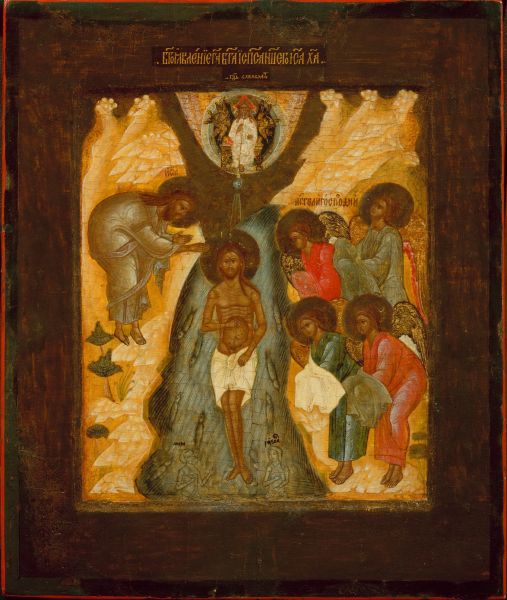|
|
The Baptism (The Epiphany). Early 17th century

Tempera and levkas on wood
35, 7 х 30 х 2,2
State Russian Museum
Annotation
The icon is devoted to one of the Twelve GreatFeasts of Orthodoxy: the Epiphany (Baptism) ofJesus Christ, observed by the church on 19 January(6 January, Old Style). This holiday celebratesthe beginning of Christ’s earthly ministry for thesalvation of mankind and his first appearance asthe Son of God.
The image’s iconography is largely traditional,based on prototypes established in the earlyByzantine period. Christ stands in the waters of theJordan with John the Baptist bowed towards him.On the other bank are four angels. The covers intheir hands illustrate the custom of rubbing downthe newly baptised as they emerge from the baptismalfont. In addition, covered hands symbolisedeep reverence. This event is described by theFour Evangelists (Matt. 3:13–17, Mark 1:9–11,Luke 3:21–22, John 1:29–34). A unique featureof this work’s iconography is its depiction of theLord of Hosts clothed in white, seated on a throneand surrounded by cherubims. This image has itssource in a passage from the Old Testament: “I beheldtill the thrones were cast down, and the Ancientof days did sit, whose garment was white assnow, and the hair of his head like the pure wool”(Dan. 7:9). Issuing from the Lord of Host’s mouthis a ray pointing towards Christ with a dove symbolisingthe Holy Spirit. Thus the icon manifestswith maximum clarity Christ’s essence as God andthe Son of God, as one of the hypostases of theHoly Trinity.

